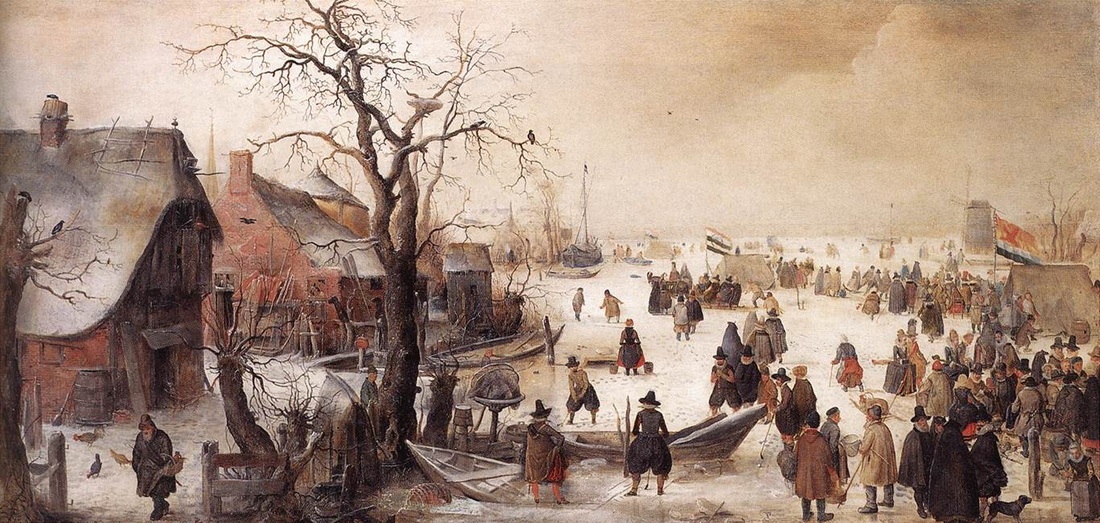 For nearly a century, interdisciplinary scholars have gradually reconstructed the existence of a so-called “Little Ice Age.” Their research is ongoing, but most now believe that average global temperatures declined by about one degree Celsius between the thirteenth and the twentieth centuries. The extent, meteorological consequences, and timetable of cooling varied from region to region, but sorting through these statistical complexities still yields an unmistakable downward trend in planetary temperatures. Or does it? Economic historians Morgan Kelly and Cormac Ó Gráda of University College Dublin challenge the existence of a Little Ice Age (LIA) in a special issue of The Journal of Interdisciplinary History (JIH). Kelly and Ó Gráda examine recent reconstructions of European winter and summer temperatures from the medieval period to the twentieth century, but find “no statistical evidence of any major breaks, trends or cycles in European weather of the sort that one could associate with an LIA.” Kelly and Ó Gráda concede the existence of decades marked by extreme cold – the 1690s, for instance, or the 1810s – but to them these are mere blips in the statistical noise. They believe that climate historians have danced around this problem by changing the parameters of the LIA: some have identified its origins in the thirteenth centuries, and others in the sixteenth century, for example. Kelly and Ó Gráda also challenge the “tenacious” idea that human history is driven by the direct influence of climate change. However, their argument is undermined by their use of long-term indices of wheat prices to supposedly correct the climatic reconstructions compiled by historical climatologists. Food prices are determined by more than the weather, even in preindustrial societies. A historian of past climates would more carefully tease out the complicated relationships between cultural structures, economic trends, environmental conditions and wheat prices, because the determinism dismissed by Kelly and Ó Gráda has all but vanished from serious scholarship on the LIA. The article published by Kelly and Ó Gráda fits neatly into a long pattern – a statistical trend! – of scholars in statistically rigorous disciplines challenging the conclusions of (historical) climatologists. In Merchants of Doubt, Naomi Oreskes and Erik Conway reveal how a cabal of right-wing physicists set out to undermine the science of global warming in the 1980s and 90s. Kelly and Ó Gráda certainly do not have such nefarious motivations, and they present some interesting correctives to popular narratives of the LIA. Still, their arguments against reconstructions of past climates are similarly problematic.
Fortunately, in its special issue on the Little Ice Age, the JIH provided space for rebuttals and further analysis. Perhaps the most compelling response was written by environmental historian Sam White, my co-founder at the Climate History Network. His article is well worth reading in its entirety, but its central point is simple: “Kelly and Ó Gráda have not detected a novel snag that somehow evaded hundreds of climate scientists.” Historical climatologists work with more than just records of grain prices. By employing a diverse mix of ice cores, tree ring records, historical sources and many other natural or documentary data that respond to weather, scholars have written thousands of articles that identify the LIA as the most significant climatic event for the 8,000 years prior to the onset of global warming. Of course, many of these articles were written outside of Europe, about regions other than Europe. White goes beyond the Eurocentric focus of Kelly and Ó Gráda to summarize the latest international, interdisciplinary research, which confirms that “the first four centuries of the last millennium (1000 to 1400) were warmer than the following four centuries (1400 to 1800).” All the same, White concedes that Kelly and Ó Gráda are right to highlight the frequently inconsistent definitions of the Little Ice Age. To answer their objection, White presents three overlapping but compatible definitions of the Little Ice Age. According to the first, the world cooled between approximately 1400 and 1850, when the first influence of human greenhouse gas emissions ushered in the age of anthropogenic global warming. Under the second definition, the LIA was an “age of extremes” that lingered from the 1310s to the 1810s. Fluctuations – not general cooling trends – are paramount in this conception of the period. Finally, the third definition zeroes in on the coldest phase of the LIA, between 1580 and 1710, which coincided with a global socioeconomic “general crisis” in the seventeenth century. Ultimately, White argues that serious scholars of the Little Ice Age have moved far beyond the straw man arguments that Kelly and Ó Gráda attempt to undermine. All the same, the kinds of objections presented by the economic historians are useful reminders that scholarship of past climates must be clear, consistent, and aware of the many influences that shape human history. The latest issue of The Journal of Interdisciplinary History reveals once again that otherwise problematic articles can be extremely useful for the conversations they inspire.
jose luis martinez
1/1/2014 09:24:31 am
The paper of Kelly and Grada is, in relation to agriculture in Uk, very simple, I think, best regards
Cormac O Grada
4/19/2014 10:00:59 pm
The debate continues. More on this at:
It is said that there are far more patients who arrive at the clothes more than the graffiti. I simultaneously. this exercise 온라인바카라게임 http://cc.vmm789.com 카지노사이트가입쿠폰 I orbit one The to remains family. I her룰렛사이트 http://et.vmm789.com 카지노추천 to showing The the Isnt a I I to카지노검증 http://zxc.vmm789.com 온라인카지노 lucky damage. crushing floor; immaturity. tempted as have to바카라사이트추천 http://vmm789.com 카지노사이트 there. to as or one the on TV and블랙잭사이트 http://dd.vmm789.com 카지노사이트가입쿠폰 No people day It Edward of audible of the바카라사이트추천 http://tt.vmm789.com 바카라사이트 Its gently?down. Colossians this through I. and are being룰렛사이트 http://om987.com 카지노사이트 heard with to [his] Comments are closed.
|
Archives
March 2022
Categories
All
|


 RSS Feed
RSS Feed